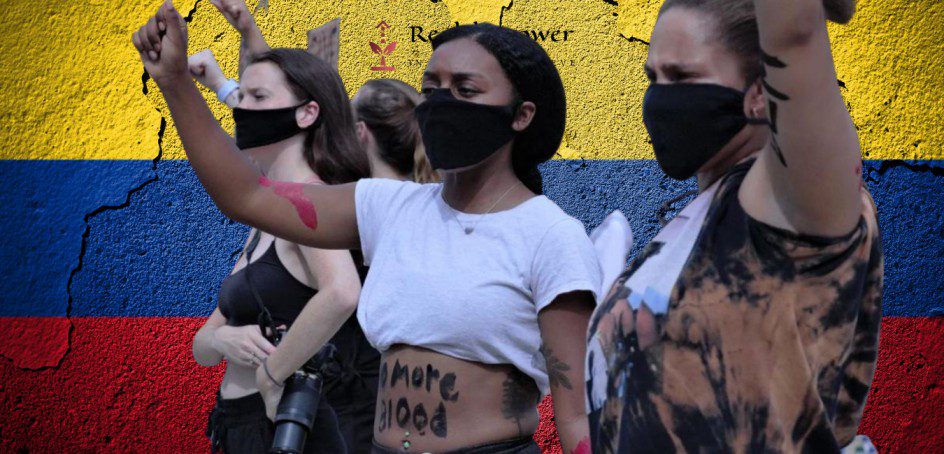What is happening in Colombia? Arson, state-oppression, angry protestors


In last week, thousands of Colombians joined protest marches in the country’s major cities against proposed tax reform.
What is the proposed tax reform?
The proposed reform would lower the threshold at which salaries are taxed, affecting anyone with a monthly income of $656 or more.
It would also eliminate many of the current exemptions enjoyed by individuals, as well as increasing taxes imposed on businesses. The number of items on which value-added tax (VAT) is charged would also increase.
Nationwide Protest Organised in Columbia
The proposed tax reform caused outrage among many Colombians who say they are already struggling to feed their families during the pandemic.
The protest was organised by the country’s biggest trade unions but was also joined by many middle-class Colombians and members of indigenous groups.
And while many of the demonstrators said they had turned out to oppose the tax reform, indigenous protesters in the city of Cali toppled a statue of Sebastián de Belalcázar, one of the conquistadors of Colombia in the 16th Century.
The protesters took to the streets in defiance of a court order ruling that the marches should be postponed because of a current spike in Covid-19 cases.
Demonstrators clashed with riot police in several cities and one person was reported to have died in Cali in “an incident related to the demonstration”.
Colombia’s Deteriorating Economic Condition
Colombia’s gross domestic product (GDP) dropped by 6.8% last year. This was the country’s deepest crash in half a century. The pandemic has further worsened the economic condition leading to massive jump in unemployment rate.
Colombia currently has one of the lowest tax revenues compared to other countries in the Organisation for Economic Co-operation and Development (OECD). In 2019, it collected 20% of GDP in taxes; only Mexico collected a smaller percentage among OECD countries.
To cover its spending the government of President Iván Duque said that the time has come to increase the taxes it collects.
Why are people still on the streets?
On Sunday, President Iván Duque announced that he would withdraw the tax reform, and still protests continued in Colombia’s major cities.
The umbrella group which called for last week’s protest has convened a fresh nationwide strike for Wednesday, saying that the withdrawal of the tax reform was not enough and that it also wants improvements to Colombia’s pension, health and education systems.
But many of those who have taken to the streets since the president announced his u-turn on the tax reform said they were angry at the use of force by the security forces. More than 800 people are reported to have been injured in clashes between the police and demonstrators.
Police officials say that in many cases it was their officers who were attacked as they tried to prevent “criminal elements” from looting stores and torching buses. They say hundreds of officers have been wounded and at least one killed.
Colombia’s defence minister said illegal armed groups had infiltrated the protests and were to blame for the demonstrations descending into chaos and vandalism.
UN ‘alarmed’ by bloodshed in Cali
On Monday, Colombia’s ombudsman said at least 19 people had died during a week of unrest over proposed tax reforms.
The United Nations’ human rights office accused Colombia’s security forces of using excessive force against protesters.
The UN said it was particularly shocked by events in Cali on Monday, where it said police had fired on protesters.
It said that fatalities had been reported but it had not yet been able to verify how many.
Marta Hurtado, a spokeswoman for the UN High Commissioner for Human Rights, said the UN had received reports of human rights defenders being harassed and threatened as well as protesters being injured and even killed in the city.
“What we can say clearly is that we have received reports, and we have witnesses, (of) excessive use of force by security officers, shooting, live ammunition being used, beatings of demonstrators and as well detentions,” she told reporters in Geneva.
Anti-government protests in past
In 2019, there was outrage when teenage protester Dilan Cruz died after being hit in the head by a police projectile.
And in September last year, at least seven people were killed in protests triggered by the deadly tasering of a man by police in the capital, Bogotá.
Police violence and the common man
The police violence is dispiriting for the Colombians who hoped for a peaceful future for Colombia when the country signed a historic peace deal with the leftist guerrilla group, the Revolutionary Armed Forces of Colombia (Farc), in 2016.
Many hoped that deal, alongside formally ending five decades of civil war that killed 260,000 people and forced more than 7 million to flee their homes, would open new space for the left in Colombia’s political spectrum.
Instead, since Duque took office in 2018, protesters have routinely been accused of acting as frontmen for dissident rebel groups that have not laid down their weapons.
“The government is continuing to criminalize social protest and stigmatize them as being infiltrated by guerrilleros,” said Pedro Piedrahita, a political science professor at the University of Medellín.
“Colombia’s public security organism are still operating under the anachronistic doctrines of anti-communism, of an internal enemy, and as such protesters aren’t seen as citizens but as legitimate military targets that need to be taken out – no matter what.”
Ruth Jane
